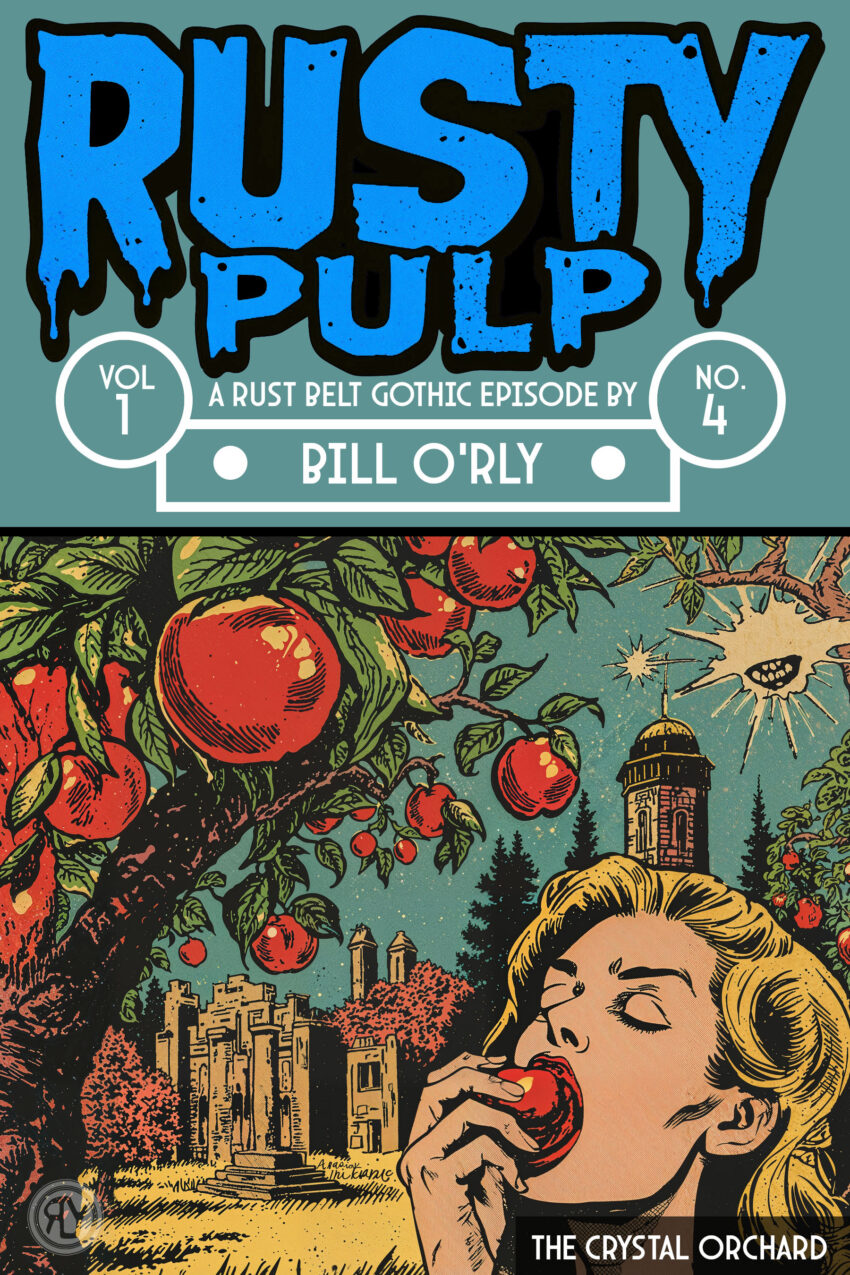20 pgs.
Dr. Elena Marchetti, a botanist studying industrial contamination, investigates rumors of a strange orchard growing on the abandoned grounds of Ashton Hall Psychiatric Hospital. There, she discovers trees bearing glass-like fruit – faceted, glowing objects that seem to contain more than mere minerals. When a woman eats one and is instantly relieved of her lifelong grief – only for another person nearby to collapse beneath the sudden weight of sorrow – Elena realizes the orchard transfers memory and trauma between people.
As she documents the phenomenon, Elena encounters others drawn to the grove: a veteran haunted by war, a daughter carrying her mother’s pain, a survivor of Ashton Hall’s forgotten experiments. Their stories expose a web of generational suffering that has seeped into the land itself. Elena’s research reveals that the orchard may have formed from both chemical contamination and psychic residue – a living system feeding on human pain, born of her own past work on a neurotoxic fungus.
Confronted with the physical embodiment of guilt, Elena must decide whether to surrender her burden or face it. Her ultimate act – to alter the grove’s network and nurture renewal instead of erasure – transforms both the land and herself.
A meditation on accountability, ecology, and memory, The Glass Orchard entwines science and the supernatural to explore how guilt, grief, and healing take root in the poisoned soil of the Rust Belt.
FIRST PAGE EXCERPT
“Dr. Elena Marchetti first heard about the crystalline growths in
a hushed conversation at a local diner. The old man who
spoke of them had the hollowed-out look of someone who had
seen too much of the wrong kind of wonder. He described an
orchard where the fruit wasn’t flesh and juice, but faceted
glass that chimed in the wind like broken church bells.
Elena, a botanist studying contamination effects on local flora,
dismissed it as folklore spun from the toxic legacy of the
nearby, long-shuttered Ashton Hall Psychiatric Hospital. The
region was riddled with such stories-chemical spills that
glowed in the dark, fish with too many eyes, trees that grew in
impossible spirals. Rural legends born from decades of
industrial negligence and institutional secrecy.
But the scientist in her, the part that thrived on anomalies,
couldn’t quite let it go.
Following her instruments through the overgrown grounds of
Ashton Hall, she found herself in a place where the air grew
still and light took on a strange, prismatic quality. The path
wound through stands of dying birch and oak, their leaves
yellowed by something more than seasonal change. Her
spectrometer detected trace amounts of industrial solvents,
compounds that shouldn’t exist in nature but had been seeping
into the groundwater for decades.
The hospital’s ruins loomed through the trees-red brick
buildings with broken windows, their facades stained with
decades of weather and neglect. Vines had claimed the walls,
and small trees grew from the gutters, nature slowly reclaiming
what humans had abandoned.
Then she saw it: an orchard of gnarled trees, their branches
heavy with fruit that glittered in the dappled sunlight. Apples,
pears, plums, cherries-but all glass. Not smooth, polished…”

